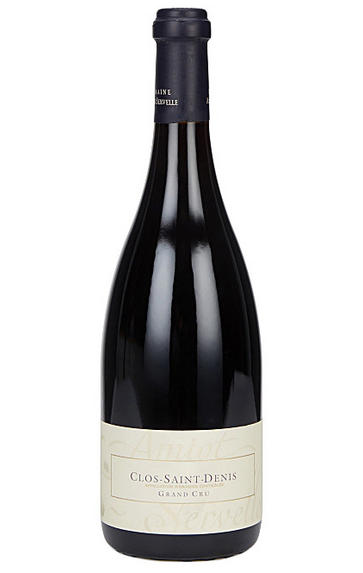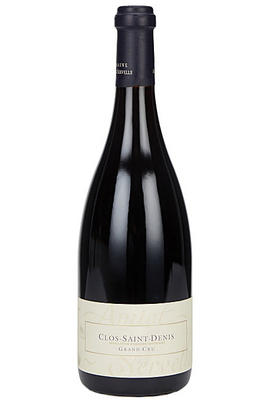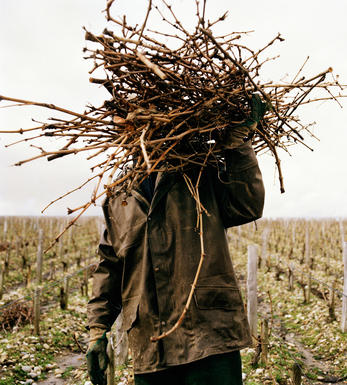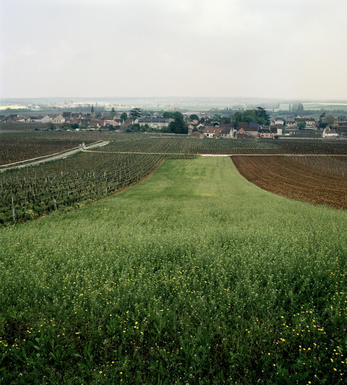
2013 Clos-St Denis, Grand Cru, Domaine Amiot-Servelle, Burgundy

Critics reviews
Neal Martin - 02/01/2015
About this WINE

Domaine Amiot-Servelle
The Domaine Amiot-Servelle is run by Christian Amiot, one of the sons of Pierre Amiot from Morey St Denis, and married to Elisabeth Servelle, daughter of Bernard Servelle-Tachot. The vineyard holdings below come from the latter, though from 2010 there will be village Morey St Denis, Charmes-Chambertin and Clos St Denis from the Amiot side. Christian is also in charge of the local syndicat de l’appellation.
The domaine has been farmed organically from 2003, with AB certification from the 2008 vintage. The wines taste fresh and modern although there is no great reliance on oak - 20% new wood is used for the village wine up to 50% for the two top premiers crus. Since 2007 there has been a single vineyard bottling of Chambolle-Musigny Bas Doix alongside the regular version from a blend of plots.
Jasper Morris MW, Burgundy Wine Director and author of the award-winning Inside Burgundy comprehensive handbook.

Morey-Saint-Denis
Morey is sometimes ignored between its two famous neighbours, Chambolle-Musigny and Gevrey-Chambertin, but its wines are of equal class, combining elegance and structure. Morey-St Denis, being that little bit less famous, can often provide excellent value.
The four main Grand Cru vineyards continue in a line from those of Gevrey-Chambertin, with Clos St Denis and Clos de la Roche the most widely available. Clos des Lambrays (almost) and Clos de Tart (entirely) are monopolies of the domains which bear the same names.
Domaine Dujac and Domaine Ponsot also make rare white wines in Morey-St Denis.
- 64 hectares of village Morey-St Denis
- 33 hectares of Premier Cru vineyards (20 in all). Best vineyards include Les Charmes, Les Millandes, Clos de la Bussière, Les Monts Luisants
- 40 hectares of Grand Cru vineyard. Clos de Tart, Clos des Lambrays, Clos de la Roche, Clos St Denis and a tiny part of Bonnes Mares
- Recommended Producers: Dujac, Ponsot, Clos de Tart, Domaine des Lambrays

Pinot Noir
Pinot Noir is probably the most frustrating, and at times infuriating, wine grape in the world. However when it is successful, it can produce some of the most sublime wines known to man. This thin-skinned grape which grows in small, tight bunches performs well on well-drained, deepish limestone based subsoils as are found on Burgundy's Côte d'Or.
Pinot Noir is more susceptible than other varieties to over cropping - concentration and varietal character disappear rapidly if yields are excessive and yields as little as 25hl/ha are the norm for some climats of the Côte d`Or.
Because of the thinness of the skins, Pinot Noir wines are lighter in colour, body and tannins. However the best wines have grip, complexity and an intensity of fruit seldom found in wine from other grapes. Young Pinot Noir can smell almost sweet, redolent with freshly crushed raspberries, cherries and redcurrants. When mature, the best wines develop a sensuous, silky mouth feel with the fruit flavours deepening and gamey "sous-bois" nuances emerging.
The best examples are still found in Burgundy, although Pinot Noir`s key role in Champagne should not be forgotten. It is grown throughout the world with notable success in the Carneros and Russian River Valley districts of California, and the Martinborough and Central Otago regions of New Zealand.


Buying options
Add to wishlist
Description
The 2013 Clos Saint Denis Grand Cru has a tightly wound bouquet with blackberry and boysenberry fruit, less expressive than the Charmes-Chambertin ’11 but with fine delineation and focus. The palate is very structured with fine, succulent tannins and a keen silver thread of acidity. There is real density to the Clos Saint Denis, a symmetrical structure and a lovely dash of white pepper on the spicy finish. It deserves several years of aging. Superb.
Neal Martin, The Wine Advocate (winter 2015)
wine at a glance
Delivery and quality guarantee